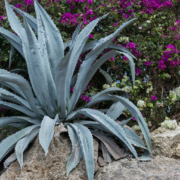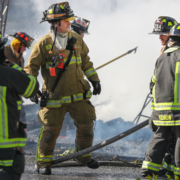Fire is a real and constant threat in Southern California. This is especially true in wildland interface areas. For effective fire prevention, it is important to select plants, choose landscape designs and perform consistent maintenance in accordance with fire safety guidelines.
Plan for fire safety
Landscapes should resist ignition and provide 35 ft. of actively maintained defensible space around structures and access zones. This maximizes fire prevention and also allows for access by fire crews, if necessary.
Native plants adapted for fire prevention
Many of San Diego County’s native plant communities, like chaparral, are able to survive and recover from infrequent fire. Some plants use fire to signal available space to grow and thus start the germination process. However, when fires are too frequent, event the most well-adapted plants will have trouble surviving.
Invasive species have made fires more frequent. In addition, they allow fires to burn longer and with hotter intensity. Fire prevention in landscaping means it is even more important to avoid invasive plants in fire-prone zones.
Use plants that resist ignition
Select the types of native plants that will be less likely to ignite and produce airborne plant embers. Such plants will include those with a high salt and/or water and low volatile oil content in their leaves. Succulents are a great example of these types of plants. Agaves, aloes, crassulas and other succulents store extra water in their fleshy leaves.
For fire prevention, avoid messy, oily trees and shrubs like eucalyptus, since they will ignite quickly and burn hot and long. These plants will also release embers into the air and further spread the fire.
To prevent fires, maintenance is key. Preventive maintenance includes regularly removing dry grass, thatch, brush, weeds, litter, waste and dead and dying vegetation. Dead leaves and branches are particularly flammable, especially on evergreen shrubs or vines. Pruning trees and thinning shrubs and perennials regularly will also help prevent fires.
This article was inspired by the 71-page Sustainable Landscapes Program guidebook available at SustainableLandscapesSD.org. The Water Authority and its partners also offer other great resources for landscaping upgrades, including free WaterSmart classes at WaterSmartSD.org.




